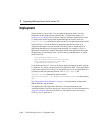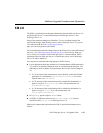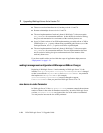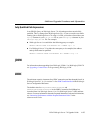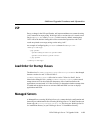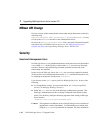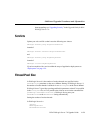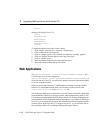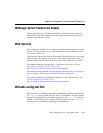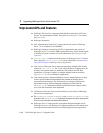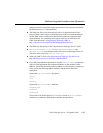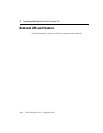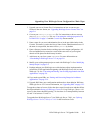
1 Upgrading WebLogic Server 6.x to Version 7.0
1-32 BEA WebLogic Server 7.0 Upgrade Guide
...
/Server>
Starting in WebLogic Server 7.0:
<Server
Name="myserver"
... >
<ExecuteQueue
Name="default"
ThreadCount="23" />
/Server>
To change the thread count value via the Console:
1. In the console, select Servers > myServer > Monitoring > .
2. Click on Monitor all Active Queues.
3. Click on "default" queue (a list of threads and what they are doing appears).
4. Click on Configure Execute Queues (at the top of the page).
5. Click on "default" queue.
6. Enter the number of threads associated with this server.
7. Restart the server to make changes take effect.
Web Applications
The weblogic.management.runtime.ServletRuntimeMBean.getName() API
(in WebLogic Server 6.0) has changed to
weblogic.management.runtime.ServletRuntimeMBean.getServletName() in
WebLogic Server 6.1 and 7.0. You will have to update your source code and recompile
if you are using this interface.
With Java Servlet Specification 2.3, authorization-on-forward is no longer default
behavior. To obtain authorization when you forward to a secure resource, add
<check-auth-on-forward> to the weblogic.xml file.
Servlet Request and Response objects have a new API. Some serializable, lightweight
implementations of these may no longer compile without implementing the new API.
It is strongly recommended that you use the new Servlet 2.3 model and substitute your
implementations of Servlet Request and Response objects. If you did this in WebLogic
Server 6.0, you were probably relying on the undocumented, internal implementations
of these objects. WebLogic Server 7.0 supports Servlet 2.3, so you should be able to
take advantage of the new ServletRequest/ResponseWrapper objects.



